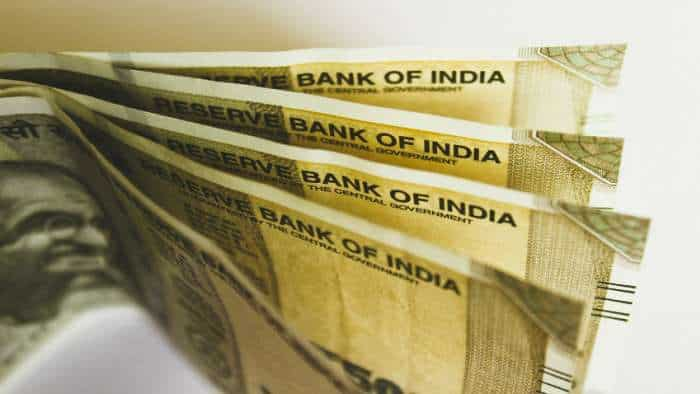Credit markets crisis: What caused it, what is in store and is it over? Find out
The past three months have been quite challenging for the Indian financial markets. Though they have recovered in October, the equity markets witnessed a correction of around 17% from their peaks.

The past three months have been quite challenging for the Indian financial markets. Though they have recovered in October, the equity markets witnessed a correction of around 17% from their peaks. The currency has depreciated nearly 15% this year and the yields across the debt markets surged with the 10-year government yield crossing 8%.
Though emerging markets have been under stress in 2018 the last trigger in India was a credit default by IL&FS. It led to a massive sell-off in bonds and CP’s of the NBFC’s having exposures to real estate and housing finance companies fearing cross defaults and led to a mini credit squeeze. There was a massive withdrawal of funds from mutual funds as the scare of further defaults rattled the markets.
What led to this?
The NBFC’s have grown their balance sheets in the past five years by leaps and bounds as they gained market share ceded by PSU banks who have been battling with their NPAs and drag on profitability. The NBFC’s were supported by the post demonetisation liquidity surge which helped them to shore up liabilities as the system was looking to deploy excess liquidity.
The unintended consequence of this was the unsustainable leverage which these entities built-up ranging from 3-20 times of their capital. Leverage is not bad in times of growth but comes to bite when the liquidity tightens and as the global liquidity started to tighten.
The foreign portfolio investors (FPI) withdrew around $12 billion from the Indian equity and debt markets. Another issue is the mismatch of asset liability profiles of the NBFC’s i.e., reliance on the short end of the market and mutual fund’s (MF) one gets prone to uncertain events.
What’s in store?
Off late, the markets have shown signs of stability with all markets have staged recovery i.e., currency, equity and fixed income markets. It’s been a combination of global factors, oil coming down to 70 dollars giving the much-needed respite to the rupee. Also, the Reserve Bank of India (RBI) realising the gravity of the situation has injected Rs 1 lakh crore of liquidity in the system through OMO’s.
The credit markets have thawed a little bit and the NBFC’s have been able to raise /rollovers short-term debts from mutual funds. Banks have also opened their opportunistic tap for NBFCs acquiring assets for their PSL book.
Watch this Zee Business video here:
Is the crisis over?
We may have seen some respite in the credit markets but it’s going to be a long haul before the credit markets come to normalcy. An effective and non-disruptive resolution to the IL&FS case would be the biggest prerequisite.
The wires are interlinked spanning across the financial system. As IL&FS was at a point of time a deemed financial institution the bonds are held by a lot of Provident and pension funds and any default on them would have political and social ramifications.
Get Latest Business News, Stock Market Updates and Videos; Check your tax outgo through Income Tax Calculator and save money through our Personal Finance coverage. Check Business Breaking News Live on Zee Business Twitter and Facebook. Subscribe on YouTube.
RECOMMENDED STORIES

Highest Senior Citizen FD rates: See what major banks like SBI, PNB, Canara Bank, HDFC Bank, BoB and ICICI Bank are providing on special fixed deposits

SBI Green Rupee Deposit 2222 Days vs Canara Bank Green Deposit 2222 Days FD: What Rs 7 lakh and Rs 15 lakh investments will give to general and senior citizens; know here

Top 7 Large Cap Mutual Funds With Highest SIP Returns in 3 Years: Rs 23,456 monthly SIP investment in No. 1 fund is now worth Rs 14,78,099

Top 7 SBI Mutual Funds With Highest SIP Returns in 15 Years: No. 1 scheme has turned Rs 12,222 monthly SIP investment into Rs 1,54,31,754; know about others too
10:59 AM IST










 RBI flags irregularities in gold loan practices, urges banks and NBFCs to tighten policies
RBI flags irregularities in gold loan practices, urges banks and NBFCs to tighten policies Non-bank lender Clix raises Rs 220 cr from Apollo, others
Non-bank lender Clix raises Rs 220 cr from Apollo, others  India's non-banking financial sector grew by 10%; declined globally by 3 %
India's non-banking financial sector grew by 10%; declined globally by 3 % Five-Star Business Finance Q4 results: NBFC records 40% growth in PAT at Rs 236 crore
Five-Star Business Finance Q4 results: NBFC records 40% growth in PAT at Rs 236 crore  UGRO Capital profit rises 245% to Rs 25 crore
UGRO Capital profit rises 245% to Rs 25 crore